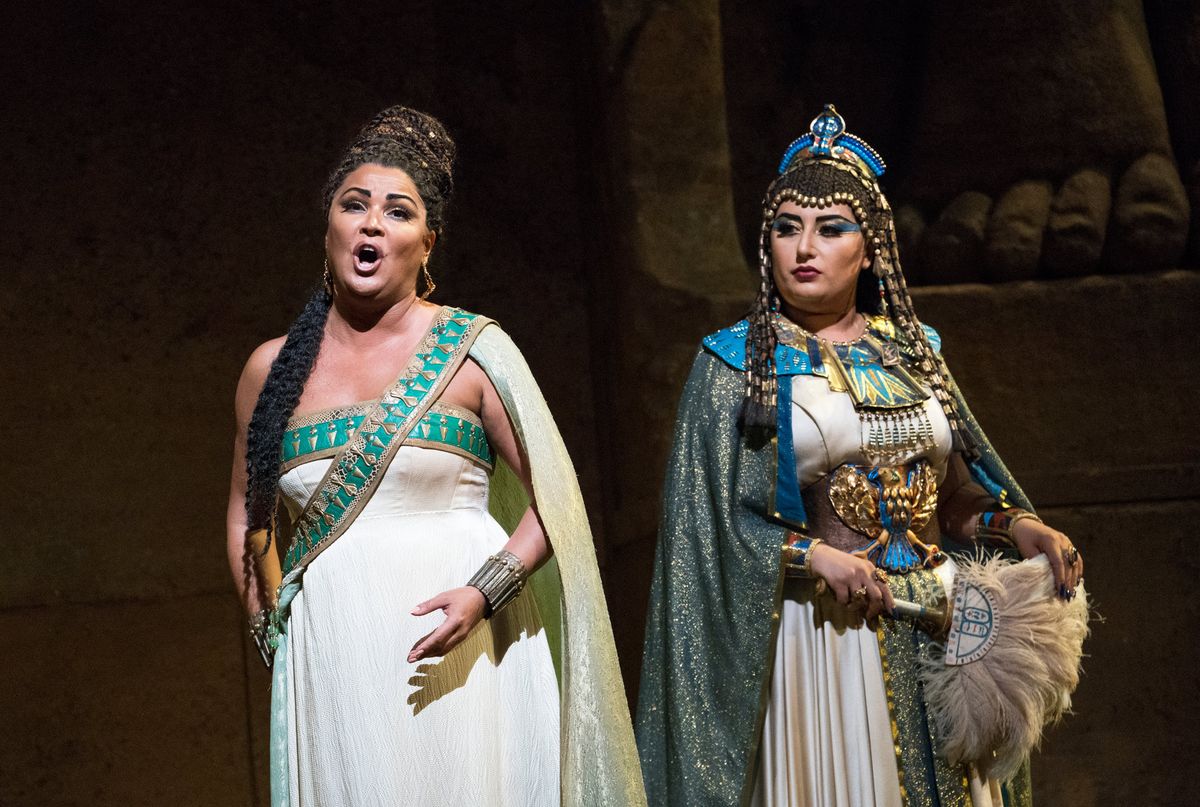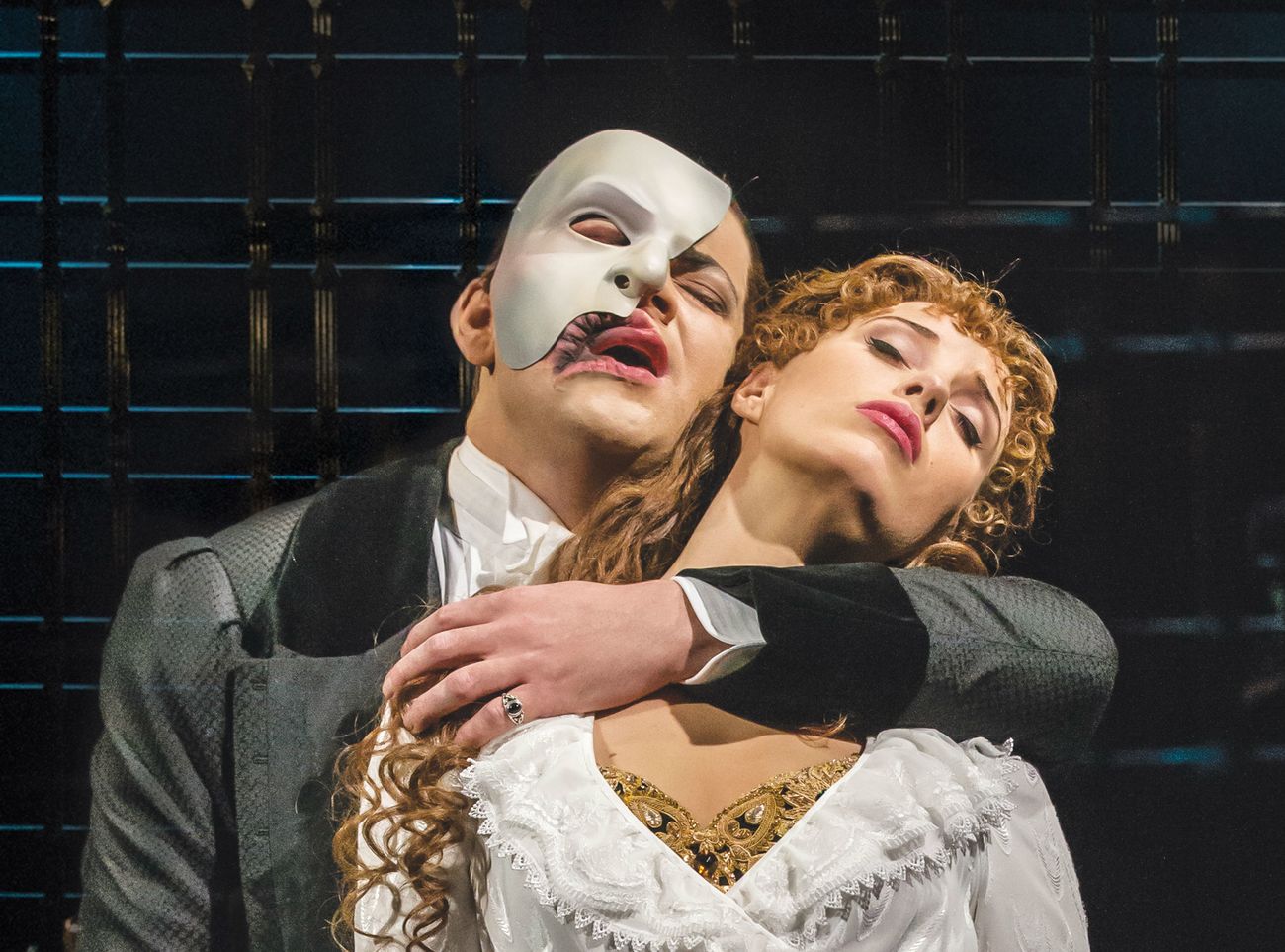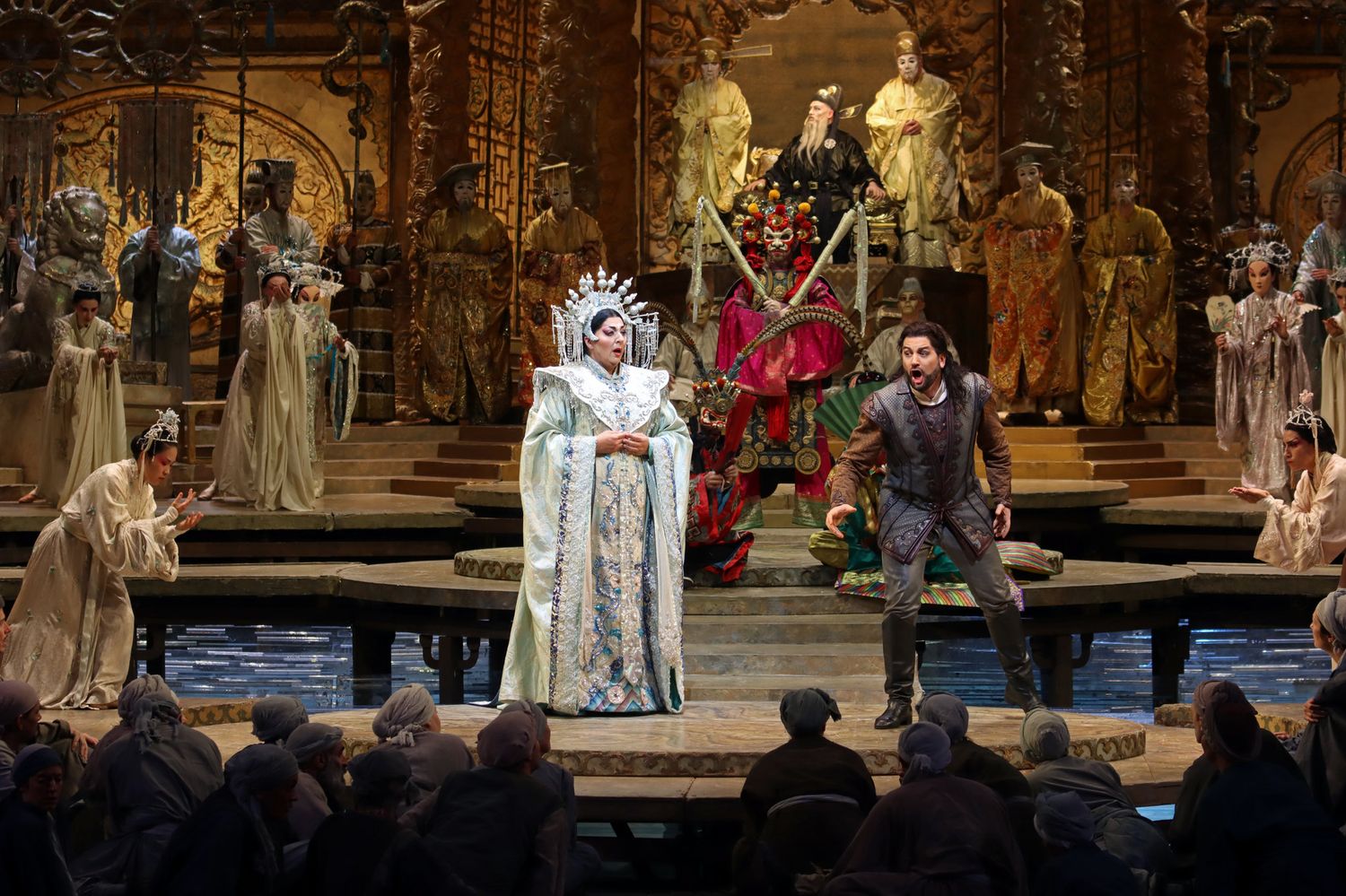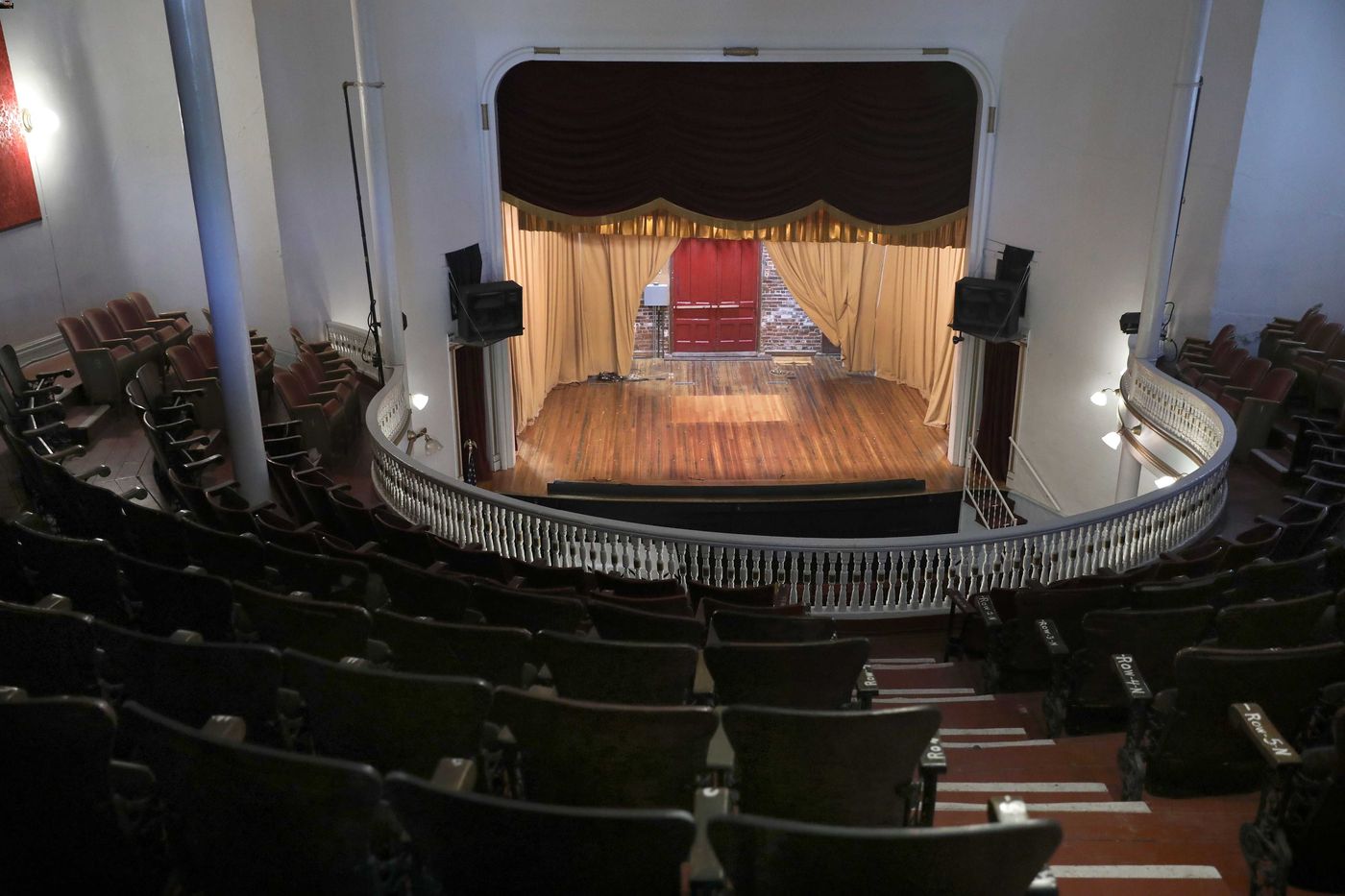Home>Events & Info>Opera>What Is The Libretto In Opera
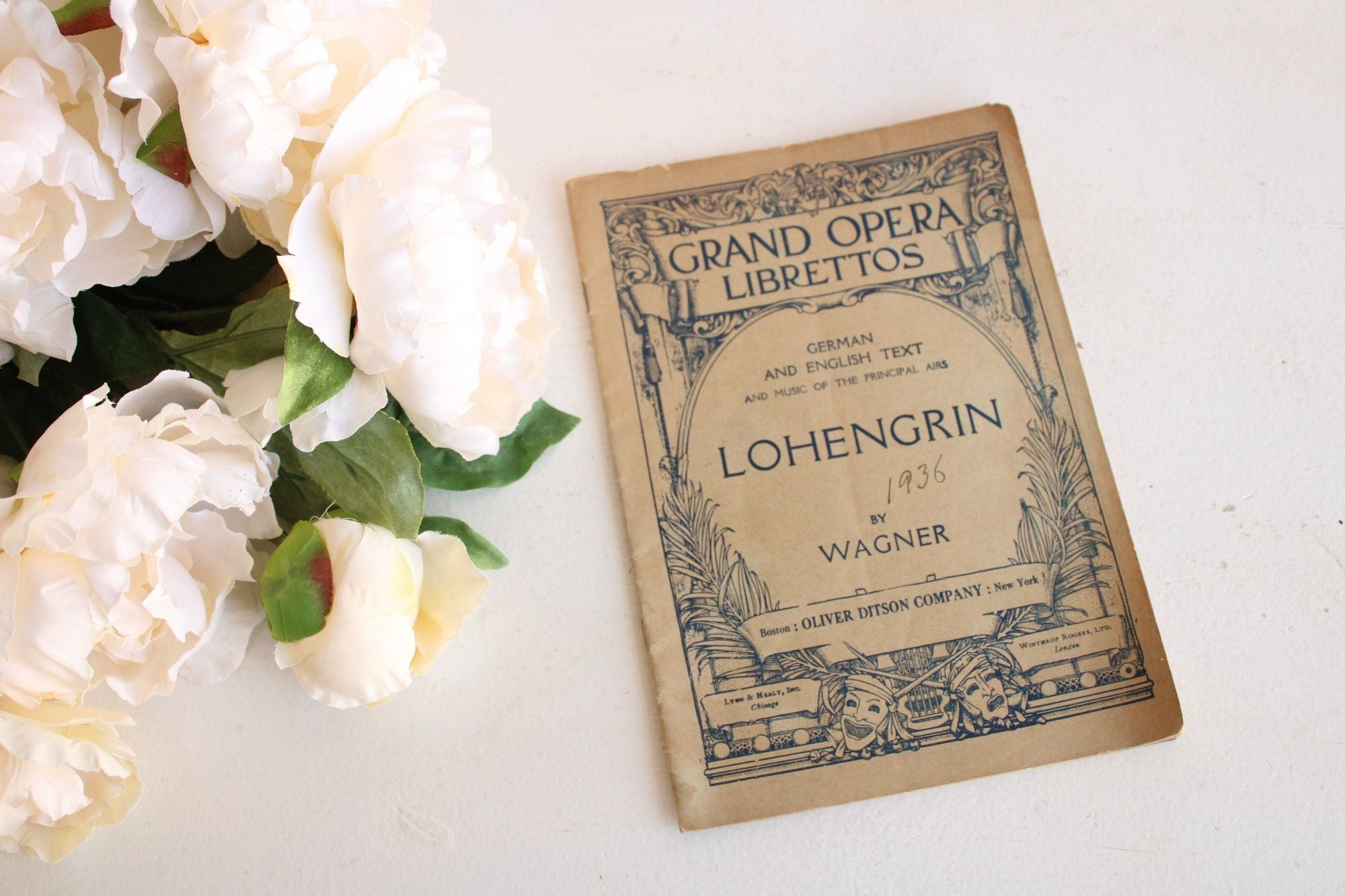

Opera
What Is The Libretto In Opera
Modified: January 22, 2024
Learn all about the libretto in opera, its role, and significance. Understand how this element shapes the storytelling in opera performances.
(Many of the links in this article redirect to a specific reviewed product. Your purchase of these products through affiliate links helps to generate commission for AudioLover.com, at no extra cost. Learn more)
Table of Contents
- Introduction
- Definition and Purpose of a Libretto in Opera
- History of Librettos in Opera
- The Role of Librettists in Opera Production
- Elements of a Libretto
- Importance of the Libretto in Opera Performance
- Examples of Famous Librettos in Opera
- Challenges and Considerations in Writing a Libretto
- Collaboration between Composer and Librettist
- Conclusion
Introduction
Opera is a captivating art form that combines music, singing, acting, and visual spectacle to create a truly immersive experience. At the heart of every opera lies the libretto, a crucial component that shapes the storyline, characters, and emotions portrayed on stage. The libretto serves as the text or script that guides the performers and provides the foundation for their artistic interpretation.
A libretto is essentially the opera’s librettist’s work, who is responsible for crafting the words and lyrics that are sung by the opera’s characters. It is through the libretto that the audience gains insight into the thoughts, emotions, and interactions of the characters, creating a powerful connection between the performers and the audience.
The libretto holds the power to transport the audience to different eras, worlds, and emotions, making it an integral part of any opera production. It is a work of art in its own right, and its quality and impact play a significant role in the overall success of an opera.
Throughout history, the libretto has evolved and taken on different forms, reflecting the cultural and artistic trends of each era. From classical operas to contemporary compositions, the libretto remains a vital element in the creation of a compelling and unforgettable opera experience.
In this article, we will explore the definition and purpose of a libretto in opera, delve into the history of librettos, shed light on the role of librettists, and examine the elements that make up a compelling libretto. We will also discuss the importance of the libretto in opera performance, provide examples of famous librettos, and explore the challenges and considerations that arise when writing a libretto. Finally, we will delve into the essential collaboration between composers and librettists, highlighting the crucial partnership that brings an opera to life.
Definition and Purpose of a Libretto in Opera
In the world of opera, a libretto is the text or script of the opera, containing the words and lyrics that are sung by the characters on stage. It serves as the foundation on which the music and performances are built, guiding the singers, musicians, and production team in bringing the opera to life.
The primary purpose of a libretto is to convey the story, emotions, and themes of the opera to the audience. It provides a structure for the narrative, enabling the performers to portray the characters’ thoughts, feelings, and interactions through the power of music and drama. The libretto shapes the development of the plot and ensures that the opera’s themes and intentions are effectively communicated to the audience.
Through the libretto, the audience gains insight into the motivations of the characters, their relationships, and the conflicts they face. It allows the audience to connect with the emotions portrayed on stage, making the opera a deeply personal and immersive experience.
The libretto plays a crucial role in guiding the performers in their interpretation of the opera. It provides the singers with the lyrics and musical notation, helping them to deliver the right emphasis, timing, and expression. The libretto also serves as a roadmap for the director, set designers, and costume designers, influencing the overall aesthetic and visual elements of the production.
Additionally, the libretto acts as a vehicle for poetic expression and lyrical beauty. The words and lyrics in a well-crafted libretto are carefully chosen to evoke emotions, spark imagination, and create a sense of dramatic tension. The libretto often explores universal themes such as love, betrayal, redemption, and the human condition, making it relatable to audiences across cultures and time periods.
Ultimately, the libretto is an essential component of any opera, enabling the seamless integration of music, drama, and storytelling. It sets the stage for the performers to captivate and transport the audience, creating a theatrical experience that is both emotionally charged and intellectually stimulating.
History of Librettos in Opera
The history of librettos in opera dates back to the origins of the art form itself. Opera emerged during the late 16th century in Italy, and it quickly became a popular form of entertainment, blending music, drama, and spectacle. In its early days, opera relied on improvisation and simple plots, with performers adding their own embellishments to the music.
However, as opera grew in popularity, there arose a need for a structured and standardized format for the text. Librettos began to take shape as a written script, providing a more reliable and consistent foundation for the opera’s performances. The librettos during this period often drew inspiration from classical mythology, folklore, and historical events.
One of the most influential figures in opera history was the composer Claudio Monteverdi, who revolutionized the genre in the 17th century. Monteverdi’s operas, such as “Orfeo” and “L’incoronazione di Poppea,” featured librettos that were carefully crafted to convey complex emotions, intricate relationships, and dramatic tension.
During the Baroque era, librettos became more sophisticated, with librettists working closely with composers to create operas that explored human emotions and philosophical themes. Opera seria, a popular form of opera during this time, focused on noble characters and dramatic conflicts, with librettos often exploring themes of love, honor, and morality.
The 18th and 19th centuries witnessed a shift in opera composition and libretto writing. The rise of opera buffa introduced more lighthearted and comedic elements, with librettos often featuring humorous characters and situations. Notable composers of this period, such as Mozart and Rossini, collaborated with renowned librettists to create iconic operas like “The Marriage of Figaro” and “The Barber of Seville.”
As opera continued to evolve, so did the structure and content of librettos. The Romantic era saw an emphasis on exploration of individual emotions and psychological depth. Librettos during this time focused on intense love stories, tragic endings, and supernatural elements. Composers like Verdi and Wagner worked closely with librettists to create masterpieces like “La Traviata” and “Tristan und Isolde.”
In the 20th century, opera embraced more experimental and avant-garde approaches, with librettos breaking traditional conventions. Librettists began to incorporate contemporary social and political themes, blurring the lines between opera and other art forms. Operas like “Wozzeck” by Alban Berg and “Nixon in China” by John Adams showcased the evolving nature of librettos.
Today, librettos continue to evolve and adapt to the changing artistic landscape. They remain an essential component of opera, allowing composers, singers, and directors to bring their creative vision to life. Whether drawing inspiration from classic stories or exploring new narrative territories, the libretto plays a pivotal role in the success and impact of an opera production.
The Role of Librettists in Opera Production
A librettist is a vital figure in the production of an opera, responsible for crafting the libretto – the text or script of the opera that guides the performers and shapes the overall artistic vision. The role of the librettist goes beyond simply writing the words; they collaborate closely with composers, directors, and other members of the production team to bring their creative vision to life.
One of the primary roles of a librettist is to create a compelling and evocative narrative. They develop the storyline, characters, and dialogue, often drawing inspiration from various sources such as literature, history, mythology, or personal experiences. The librettist’s skill lies in their ability to distill complex ideas and emotions into concise and poetic language that can be effectively communicated through music and drama.
In close collaboration with the composer, the librettist ensures that the words and music work together harmoniously. They consider the rhythm, cadence, and melodic structure of the music, crafting lyrics and dialogue that fit seamlessly with the composer’s composition. The librettist’s understanding of the capabilities of the human voice and their knowledge of musical phrasing is crucial in creating a successful libretto.
The librettist also plays a significant role in shaping the characters. They give depth, motivations, and arcs to the opera’s protagonists and supporting cast. Through their words, the librettist brings the characters to life, allowing the performers to convey their emotions, conflicts, and relationships on stage. It is the librettist who captures the essence of each character and ensures that their actions and dialogue align with the overall narrative.
Furthermore, the librettist collaborates with the director and other members of the production team to create a cohesive artistic vision. They provide guidance on stage direction, blocking, and overall dramaturgy. The librettist’s expertise in storytelling helps shape the visual elements of the production, ensuring that the sets, costumes, and lighting enhance and complement the narrative.
Librettists must also consider the practical aspects of staging an opera. They work closely with the director and performers to ensure that the libretto is performable. They take into account the vocal range and abilities of the singers, potential staging limitations, and the overall timing and pacing of the opera. The librettist’s skill in balancing the dramatic and musical elements is crucial in creating a compelling and accessible work.
Ultimately, the role of a librettist is to provide a strong foundation for the collaborative efforts of the entire production team. They bring together words, music, and visual elements to create a cohesive and impactful opera experience. The librettist’s contribution is essential in shaping the emotional impact, thematic depth, and artistic success of an opera production.
Elements of a Libretto
A well-crafted libretto is composed of several key elements that work together to convey the story, emotions, and themes of an opera. These elements contribute to the overall structure and effectiveness of the libretto, providing a framework for the performers and connecting with the audience on a deep and emotional level.
1. Dialogue: Dialogue forms the backbone of a libretto. It comprises the spoken or sung words of the characters, conveying their thoughts, intentions, and interactions. The dialogue must be concise and impactful, capturing the essence of the characters and driving the narrative forward.
2. Lyrics: Lyrics are the poetic and musical text that is sung by the characters. They often contain metaphors, imagery, and expressive language to convey emotions and ideas. The librettist carefully crafts lyrics that fit seamlessly with the music, enhancing the emotional impact of the opera.
3. Aria: An aria is a solo piece sung by a character that allows for introspection and emotional expression. Arias are often a focal point of an opera and showcase the character’s emotions, desires, or decision-making. The libretto provides the text for the aria, capturing the character’s inner journey.
4. Chorus: The chorus plays a crucial role in many operas, providing a collective voice and representing a group of characters or society as a whole. The libretto includes lyrics for the chorus, which can serve a variety of functions, such as commentary, reflection, or expressing the sentiments of the crowd.
5. Recitative: Recitative is a style of singing that falls between spoken dialogue and full-blown singing. It is used to advance the plot or provide transitions between scenes. The librettist structures the recitative, ensuring that it flows naturally and effectively communicates the necessary information.
6. Ensembles: Ensembles involve multiple characters singing together, creating harmonies and intricate interactions. The libretto incorporates the lyrics for ensembles, balancing the voices and emotions of each character to create a cohesive and impactful musical moment.
7. Stage Directions: The libretto includes stage directions, guiding the performers and production team on blocking, movements, gestures, and other physical elements. These directions help bring the libretto to life on stage, ensuring that the visual and theatrical aspects align with the narrative.
8. Dramatic Tension: A well-crafted libretto builds and sustains dramatic tension throughout the opera. This involves creating conflicts, revealing secrets, and constructing narrative twists that keep the audience engaged and emotionally invested in the story.
9. Theme and Motifs: The libretto incorporates thematic elements and motifs that resonate throughout the opera. These recurring themes help unify the narrative, create emotional connections, and convey deeper meanings and ideas.
10. Structure: Finally, the libretto follows a defined structure, which may include acts, scenes, and musical numbers. The structure provides an overarching framework for the opera, ensuring a cohesive and logical progression of the story.
By carefully weaving these elements together, the librettist crafts a libretto that captivates and engages both performers and audiences, making the opera a truly immersive and transformative experience.
Importance of the Libretto in Opera Performance
The libretto holds immense importance in the performance and reception of an opera. It serves as the foundation for the music, acting, and overall artistic interpretation, shaping the emotional impact and narrative coherence of the production. Here are some key reasons why the libretto is of utmost importance in opera performance:
1. Storytelling: The libretto is responsible for conveying the story of the opera. It provides the characters, plot, and narrative structure that guide the performers and immerse the audience in the world of the opera. A well-crafted libretto ensures that the story is clear, compelling, and emotionally resonant, enhancing the overall impact of the performance.
2. Emotional Connection: Through the libretto, the performers are able to connect with the characters and convey their emotions to the audience. It enables the singers to express the depth and range of human emotions, eliciting empathy, sympathy, or even catharsis from the audience. The libretto’s ability to evoke these emotions enhances the audience’s engagement with the performance and creates a powerful and unforgettable experience.
3. Character Development: The libretto plays a crucial role in developing the characters in an opera. It provides the lines, lyrics, and actions that shape the personalities, motivations, and relationships of the characters. By crafting nuanced and well-rounded characters, the libretto allows the performers to bring depth, complexity, and authenticity to their portrayals, making the opera more relatable and emotionally resonant.
4. Musical Integration: The libretto and the music are inherently intertwined in opera. The words of the libretto shape the melodies, harmonies, and rhythms of the music. The librettist and the composer work closely together to ensure that the music seamlessly complements and enhances the emotional and dramatic aspects of the libretto. This integration is essential in creating a unified and cohesive artistic experience for the performers and the audience.
5. Unifying Theme and Motifs: The libretto often incorporates recurring themes, motifs, and leitmotifs that unify the opera. These musical and textual elements provide a cohesive thread throughout the production, enhancing the coherence and overall impact of the performance. The libretto’s incorporation of these themes and motifs helps create deeper emotional connections and adds layers of meaning to the opera.
6. Audience Engagement and Accessibility: The libretto plays a significant role in engaging the audience and making the opera accessible. By providing clear and evocative lyrics and dialogue, the libretto allows the audience to follow the plot and understand the emotions and motivations of the characters. This understanding enhances the audience’s connection to the performance, making it more immersive and enjoyable.
7. Collaborative Artistry: The libretto serves as a collaborative tool, facilitating communication and creative synergy among the composer, director, performers, and production team. It provides a shared textual and conceptual framework for the entire creative process, enabling a unified and cohesive artistic vision. The librettist’s skill in collaborating and incorporating input from various team members is crucial in creating a successful and impactful opera performance.
In essence, the libretto is the backbone of an opera performance, shaping the narrative, characters, emotions, and overall artistic experience. It is through the craft and artistry of the libretto that the opera comes to life, resonating with audiences and leaving a lasting impression.
Examples of Famous Librettos in Opera
Throughout the history of opera, there have been numerous iconic and influential librettos that have captivated audiences and inspired generations of performers and composers. Here, we explore some of the most renowned and celebrated librettos in opera:
1. Wolfgang Amadeus Mozart – “The Marriage of Figaro”: Written by Lorenzo Da Ponte, this libretto is a masterpiece of comedic opera. It beautifully intertwines love, mistaken identities, and social commentary, creating a witty and engaging storyline. The libretto captures the playful banter and emotional depth of the characters, resulting in a timeless opera that delights audiences to this day.
2. Giuseppe Verdi – “La Traviata”: Based on Alexandre Dumas’ play “La Dame aux Camélias,” the libretto by Francesco Maria Piave tells a tragic love story of Violetta, a courtesan, and Alfredo, a young nobleman. It explores themes of sacrifice, societal expectations, and redemption. The libretto’s poetic language and emotional depth, combined with Verdi’s powerful music, make “La Traviata” one of the most beloved operas of all time.
3. Richard Wagner – “Tristan und Isolde”: Wagner wrote the libretto himself for this monumental opera. “Tristan und Isolde” delves into themes of forbidden love, longing, and the transcendence of earthly existence. The libretto’s symbolic imagery and exploration of intense emotions contribute to the opera’s unique and groundbreaking style, solidifying Wagner’s status as a visionary composer and librettist.
4. Giacomo Puccini – “Madama Butterfly”: The libretto, by Luigi Illica and Giuseppe Giacosa, tells the heart-wrenching story of Cio-Cio San, a young Japanese woman abandoned by her American husband. The libretto brings to life the clash of cultures, unrequited love, and ultimate tragedy. Puccini’s expressive music, combined with the poignant libretto, creates a powerful emotional journey for both performers and audiences.
5. Benjamin Britten – “Peter Grimes”: This English-language libretto, written by Montagu Slater, explores the complex character of Peter Grimes, a fisherman wrongly accused of a child’s death. The libretto delves into themes of isolation, societal prejudice, and the destructive power of rumors. Britten’s haunting score, combined with the compelling libretto, makes “Peter Grimes” a critically acclaimed and thought-provoking opera.
6. George Gershwin – “Porgy and Bess”: This groundbreaking opera features a libretto by DuBose Heyward, based on his own novel. “Porgy and Bess” tells the story of African-American characters living in Charleston, South Carolina. The libretto explores racial inequality, love, and community, while Gershwin’s infusion of jazz, blues, and spirituals creates a uniquely American musical language.
These examples represent a small fraction of the vast repertoire of opera librettos. Each libretto has its own distinct style, themes, and cultural significance, highlighting the power of words and storytelling in the world of opera.
Challenges and Considerations in Writing a Libretto
Writing a libretto is a complex and multifaceted task that requires careful consideration of various factors. Here, we explore some of the challenges and considerations that arise when crafting a libretto for an opera:
1. Collaborative Nature: Writing a libretto is a collaborative endeavor, involving close cooperation with the composer, director, and other members of the production team. The librettist must be receptive to input and feedback, balancing their artistic vision with the practical considerations and creative contributions of others.
2. Balancing Music and Words: A librettist must strike a delicate balance between the music and the words. The libretto should provide a strong textual foundation that guides the composer, while also allowing the music to breathe and shine. It requires a deep understanding of the rhythmic and melodic elements of music to create a seamless integration between the words and the music.
3. Complexity of Characters: Creating well-rounded and compelling characters in an opera is a significant challenge. The librettist must develop characters with depth, motivations, and conflicts, while also ensuring that their actions and dialogue align with the overall narrative. Balancing character development and the constraints of the music can be a delicate task.
4. Dramatic Structure: Crafting a libretto involves constructing a cohesive and engaging dramatic structure. It requires careful consideration of pacing, plot development, and emotional arcs. The librettist must create a series of compelling scenes and moments that capture the audience’s attention and maintain dramatic tension throughout the opera.
5. Textual Economy: Given the limited time for singing in an opera, the librettist must convey the necessary information and emotions concisely. The libretto should be economical with words, using poetic and evocative language to express complex ideas and emotions in a succinct manner. It requires precision and skill to strike the right balance between brevity and depth.
6. Cultural and Historical Awareness: The librettist must be mindful of cultural, historical, and social context when writing an opera. They need to research and understand the setting, characters, and themes to ensure accuracy and authenticity. Sensitivity to cultural appropriation and stereotypes is crucial to create a respectful and inclusive portrayal.
7. Practical Considerations: The librettist must also consider practical aspects, such as vocal ranges, stage logistics, and production limitations. They must ensure that the libretto is performable and feasible within the given constraints. Consideration of the overall timing, coordination of musical numbers, and transitions between scenes are all essential considerations.
8. Flexibility and Adaptability: Writing a libretto often requires flexibility and adaptability. The librettist must be open to revisions and adaptable to changes that arise during the collaborative process. They must be willing to make adjustments to the libretto based on feedback from the composer, performers, and director, while still maintaining the integrity of their artistic vision.
Writing a libretto is a creative and intricate task that demands a deep understanding of music, drama, and storytelling. Overcoming these challenges and considering these factors is essential to create a libretto that serves as a solid foundation for the opera’s performance and resonates with the audience.
Collaboration between Composer and Librettist
The collaboration between the composer and librettist is a critical aspect of creating a successful opera. This close partnership allows the music and words to seamlessly merge, resulting in a cohesive and compelling artistic experience. Here, we explore the nature of this collaboration and its impact on the creation of an opera:
Shared Vision: The composer and librettist must share a common artistic vision for the opera. They work together to establish the overall tone, themes, and emotional core of the piece. This shared vision acts as a guiding force, informing the decisions made by both the composer and librettist at every stage of the creative process.
Understanding and Trust: A successful collaboration requires a deep understanding and mutual trust between the composer and librettist. Each must respect and value the expertise and perspective of the other. This understanding fosters open communication, allowing for fruitful discussions about the libretto’s direction, potential revisions, and the overall impact on the music and performance.
Libretto as Inspiration: The libretto provides the composer with inspiration for the music. It serves as the foundation upon which the composer builds their musical compositions. The librettist’s words influence the composer’s choices in melody, harmony, rhythm, and instrumentation, shaping the overall aesthetic and emotional impact of the opera.
Musical Considerations: The composer and librettist work closely to ensure that the text and music align harmoniously. The librettist must be aware of the musical constraints and possibilities, crafting the libretto with care to fit within these parameters. The composer, in turn, may offer suggestions or adjustments to the libretto to enhance its musicality and dramatic impact.
Dialogue and Collaboration: The collaboration between the composer and librettist is an ongoing dialogue. They exchange ideas, revise, and refine the libretto and music together, responding to each other’s suggestions and feedback. Flexibility and open-mindedness are key for both parties to allow for constructive criticism and evolution of the opera.
Adapting to the Music: As the music takes shape, the librettist may need to make adjustments to the text to accommodate the composer’s musical choices. The librettist’s flexibility in modifying the libretto ensures that the words and music work harmoniously, enhancing the emotional impact and coherence of the opera.
Collaboration with the Production Team: The collaboration between the composer and librettist extends beyond their partnership. They also work closely with the director, performers, and other members of the production team to bring the opera to life. The composer and librettist provide guidance and support, responding to the practical needs of staging and performance requirements.
A fruitful collaboration between the composer and librettist is a true synergy of creativity and artistic vision. It is through their shared efforts that the libretto and music merge to create a singular and transcendent opera experience. The collaboration is a testament to the power of creative partnerships in producing works of profound beauty and emotional resonance.
Conclusion
The libretto is an integral and vital component of opera, serving as the textual and dramatic foundation that guides the performers and shapes the emotional impact of the performance. It is through the libretto that the story, characters, and themes of the opera come to life. The collaborative efforts of the librettist and composer result in a cohesive and powerful artistic experience.
From the earliest days of opera to the present, librettos have evolved and adapted to reflect the changing artistic and cultural landscape. They have explored a wide range of themes, emotions, and styles, captivating audiences through their storytelling and lyrical beauty.
The librettist’s role is a complex one, balancing the demands of storytelling, character development, and musical integration. Challenges arise in maintaining a collaborative spirit, creating text that accommodates the music, and considering practical limitations. However, these challenges are outweighed by the rewards of creating a compelling libretto that resonates with performers and engages audiences.
The collaboration between the composer and librettist is crucial in shaping the opera’s artistic vision. Their shared understanding, trust, and creative dialogue result in works of art that are greater than the sum of their parts. Together, they bring the libretto to life with music, transforming words into an immersive and transcendent experience for performers and audiences alike.
As audiences continue to embrace opera and explore its rich and diverse repertoire, the libretto remains a fundamental element that captivates, challenges, and enlightens. It is a testament to the power of words, music, and collaboration, reminding us of the enduring beauty and power of this extraordinary art form.

